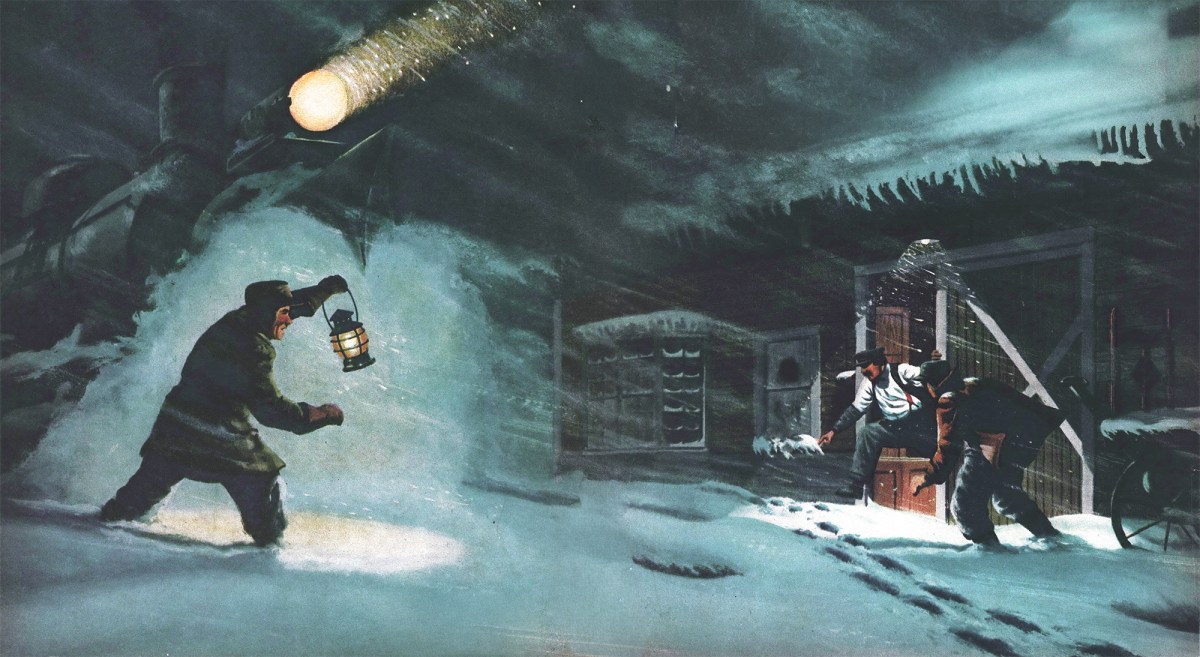25 Bizarre Frontier Security Hacks That Could Save Your Life

When you live off-grid, every shadow could be a threat, and every creak outside your cabin could mean trouble. Back in the frontier days, settlers didn’t have motion sensors, cameras, or smart locks. But they had grit, creativity, and a deep understanding of how to make the land work in their favor. Many of their oddball security tricks still hold up today, especially when high-tech solutions are no longer an option.
These simple, low-tech hacks weren’t about paranoia, they were about survival. And some of these ideas are surprisingly effective even now.
Here are 25 bizarre but effective frontier-style hacks that could still save your life in a modern crisis.
Fishhooks on Twine as Trip Alarms
Settlers tied small fishhooks to twine and strung them around their homes. When tripped, the hooks would jingle against rocks or metal scraps, acting as a crude but effective alarm.
- Low-cost
- Lightweight and easy to deploy
- Great for perimeter defense while sleeping
Cactus or Thorn Patches as Natural Barbed Wire
Thorny plants like prickly pear, wild rose, or blackberry bushes were planted around property lines to keep both humans and predators at bay.
- No maintenance once planted
- Long-term deterrent
- Also provides fruit or edible parts depending on the plant
Build What the Frontier Settlers Could Only Dream Of
They used thorns and stones! You can use ingenuity and blueprint precision.
No Grid Survival Projects is the ultimate step-by-step guide to creating real independence: power, water, food, and defense systems that never depend on the grid.
Inside you’ll learn how to:
- Build off-grid solar, wind, and hydro systems that actually work
- Design perimeter alarms and natural defenses without electronics
- Grow food and purify water when the system collapses
- Reinforce your home to handle whatever’s coming
This isn’t theory — it’s survival engineering that turns ordinary materials into life-saving systems.
Start building your off-grid fortress here!
 Geese as Watchdogs
Geese as Watchdogs
Geese are incredibly territorial and loud. Settlers kept flocks near cabins to alert them to intruders. Their honking often gave away sneaky threats before dogs even stirred.
- Never need batteries
- Can’t be hacked or disabled
- Bonus: Eggs and meat source
Broken Glass Around Windowsills
Shards of broken bottles or glass were embedded into window frames and sills to discourage anyone from sneaking in quietly.
- Simple deterrent
- Effective at night or in low visibility
- Also used on top of walls or fences
Hollow Fence Posts as Safes
Important items like deeds, cash, or even small weapons were sometimes hidden inside hollow wooden fence posts to keep them out of sight from thieves.
- Completely inconspicuous
- Ideal for backup supplies
- Great last-ditch stash if home is breached
The Deep Well of Forgotten Preparedness Knowledge
What if you could drink straight from the source — the forgotten manuals, the lost skills, the wisdom nobody teaches anymore?
That’s what JosephWell is: a living archive of off-grid intelligence, written for people who’d rather know than hope.
Inside, you’ll find real-world tactics on:
- Survival psychology and community defense
- Food and water independence for real-world crises
- The unfiltered truth about what happens when systems collapse
- Hidden prepper lessons drawn from history and firsthand accounts
- How to drastically increase home security with forgotten methods
It’s not entertainment. It’s instruction.
See all you could learn at JosephWell.com
Shutter Locks That Could Only Be Opened from Inside
Simple wooden latches, rods, or slide bolts kept window shutters locked tight, but from the inside only.
- Simple but effective security
- Easy to build or modify
- Adds a layer of nighttime protection
 Firewood Stacks with Hidden Compartments
Firewood Stacks with Hidden Compartments
Some settlers built firewood piles with hollow centers to hide tools, weapons, or emergency food.
- Blends in perfectly
- Always accessible
- Offers firewood and fallback storage in one
Noisy Paths Made from Dry Leaves or Gravel
Walkways leading up to cabins were intentionally covered in crunchy leaves, gravel, or sticks to alert residents of approaching footsteps.
- No electricity needed
- Good early warning
- Can be customized to your property layout
Outhouse Hideaways
It sounds ridiculous, but settlers sometimes stored emergency food, maps, or even a gun in a hidden compartment under or behind the outhouse.
- Not likely to be searched
- Decent for weatherproofed containers
- A great decoy spot
Bark-Camouflaged Doors
A few frontiersmen covered their doors in bark or animal hides to blend the structure into the surrounding woods.
- Makes your cabin less visible
- Especially useful for abandoned or backup shelters
- Adds to camouflage during bug-out situations
Smoke Direction as an Alert System
 Trained family members would signal with smoke direction or color (wet leaves, green branches) to indicate distress or strangers approaching.
Trained family members would signal with smoke direction or color (wet leaves, green branches) to indicate distress or strangers approaching.
- Totally silent communication
- Works at long distances
- Not dependent on technology
The “Talking String”
A taut string or thin wire stretched between structures (like a barn and house) could transmit vibration or slight sound. A hidden partner would tug it to signal silently.
- Works at night
- Can be set up in minutes
- Almost undetectable to outsiders
Echo Caves
Some settlers identified natural echo points on their land. A single clap or yell could bounce back and alert them to someone else making noise in the area.
- Leverages landscape
- Great for isolated areas
- Passive surveillance technique
If You’re Forced Into the Wild — Knowledge Is Your Shelter
Frontier families didn’t survive by luck; they survived by knowing the land.
The Wilderness Survival Guide teaches you how to endure, adapt, and even thrive far from modern comfort.
Learn how to:
- Navigate without GPS or compasses
- Build shelters from natural materials
- Identify edible and medicinal plants
- Purify water and signal for rescue
Don’t rely on luck — rely on skill!
👉 Master wilderness survival with this guide, 76% off now for Ask A Prepper Readers at this link!
Concealed Pits With Thorn Stakes
A brutal but real tactic: dig a shallow hole near trails and line it with sharpened stakes or thorn branches to deter intruders or predators.
- Only for extreme cases
- Highly dangerous
- Can be camouflaged with leaves or twigs
 Trip Lines with Bells
Trip Lines with Bells
Simple twine stretched across paths with bells or scrap metal attached would give a warning jingle when disturbed.
- Easy to DIY
- Lightweight and reusable
- Can be placed indoors or outdoors
Clay Pots as Noise Alarms
Turn clay pots upside down and balance them on tripwires or door frames. If someone brushes against them, they fall and shatter—instant alert.
- Zero cost if you’ve got old pottery
- Startles intruders
- Great for barns and sheds
Hidden Escape Hatch Beneath Floorboards
Not just for movies. Some families built trapdoors under beds or rugs leading to crawlspaces or shallow tunnels.
- Offers stealthy exit
- Useful during home invasions
- Can also be used for storage
When It’s Too Late to Bug Out — You Bug In
When the roads are blocked, the fuel’s gone, or the danger’s right outside your door, bugging in isn’t a backup plan — it’s your only plan.
The Bug In Guide shows you how to:
- Turn your home into a secure stronghold during collapse
- Store and rotate supplies efficiently without detection
- Reinforce entry points using materials you already own
- Stay invisible and self-sufficient when chaos breaks loose
The settlers fortified their cabins — now you can fortify yours.
Learn how to survive right where you are here!
Reflective Objects to Signal From Afar
Shiny metal scraps were positioned in fields to catch sunlight at certain angles, serving as signal flashes to allies or family.
- Passive daytime signal
- Excellent for surveillance or communication
- Can double as bird deterrents
 Iron Nails in Trees
Iron Nails in Trees
Pounded in at head height and left slightly exposed, iron nails could act as deterrents for those trying to climb or take cover behind trees.
- Forces people into open
- Increases your line of sight
- Deters quick ambushes
Slanted Mirrors to Watch Approaches
Shards of mirror or polished metal were set at angles inside cabins to let someone keep an eye on the approach without being seen.
- Like primitive security cameras
- Works without power
- Easily disguised as decoration
Booby-Trapped Animal Pens
Some livestock pens had counterweighted gates or hidden snares to deter rustlers or large predators.
- Animal protection + security system
- Useful for perimeter defense
- Can be reset easily
Noise-Making Door Pulls
 Settlers would attach bones, chains, or beads to door handles so they made noise when the door was moved.
Settlers would attach bones, chains, or beads to door handles so they made noise when the door was moved.
- Simple audio alert
- Great for night-time security
- Can be made from salvaged items
Whistle Codes
Family members developed simple whistle codes to signal danger, mealtime, or requests for help without shouting.
- Quick, efficient communication
- Avoids panic
- Can be taught to kids easily
Scarecrow Sentinels
They weren’t just for birds. Life-sized dummies with hats or coats were used to give the illusion of guards watching over property.
- Psychological deterrent
- Creates the illusion of activity
- Even works during the day
Thorny Branches in Chimneys
When leaving the homestead for extended periods, settlers would pack thorny branches down the chimney to block access and signal if someone had entered.
- Smart anti-theft tactic
- Creates a visible “tamper sign”
- Also blocks animal entry
Old Wisdom. Modern Survival.
The Amish have lived self-reliantly for centuries — no electricity, no panic, no dependency.
The Amish Ways Book reveals hundreds of simple, effective methods for food preservation, homestead repairs, natural remedies, and off-grid living that never fail when technology does.
Discover how to:
- Store food with zero refrigeration
- Heal using plants and time-tested remedies
- Build tools and systems that last for decades
- Live quietly, safely, and completely independent of the grid
Their way of life is the backup plan civilization forgot.
👉 Learn their secrets here: The Amish Ways Book
Final Thoughts
These old-school security methods prove that you don’t need electronics to protect what’s yours. A little creativity, local resources, and strategic thinking can go a long way in defending your homestead—especially when modern systems fail. Whether you’re living off-grid or just want to up your preparedness game, which one of these hacks would you try today?
You may also like:

3 Non Lethal Booby Traps From An Army Vet
Build Your Own Off-Grip Endless Electricity Generator (Video)
Everything You Need to Know About the Conibear Trap
Survival Hacks From The Civil War That Are More Useful Than Ever
11 Frontier Survival Hacks Worthy of Daniel Boone
Read the full article here









